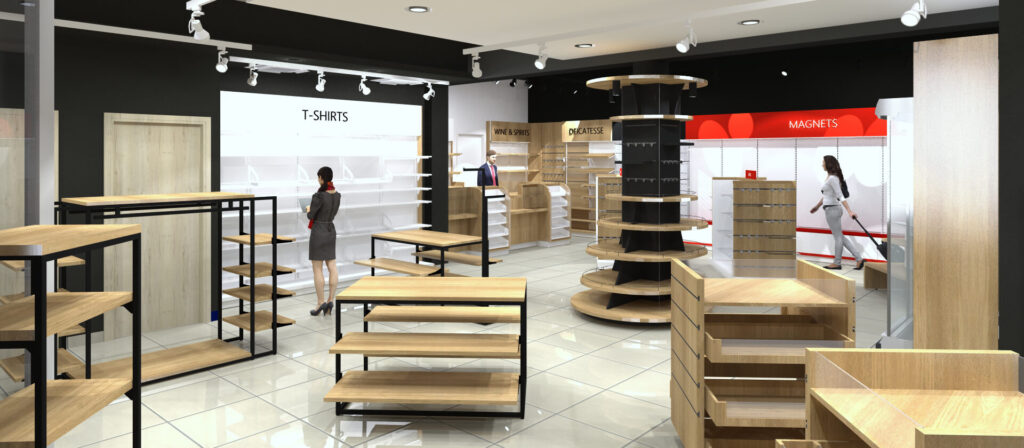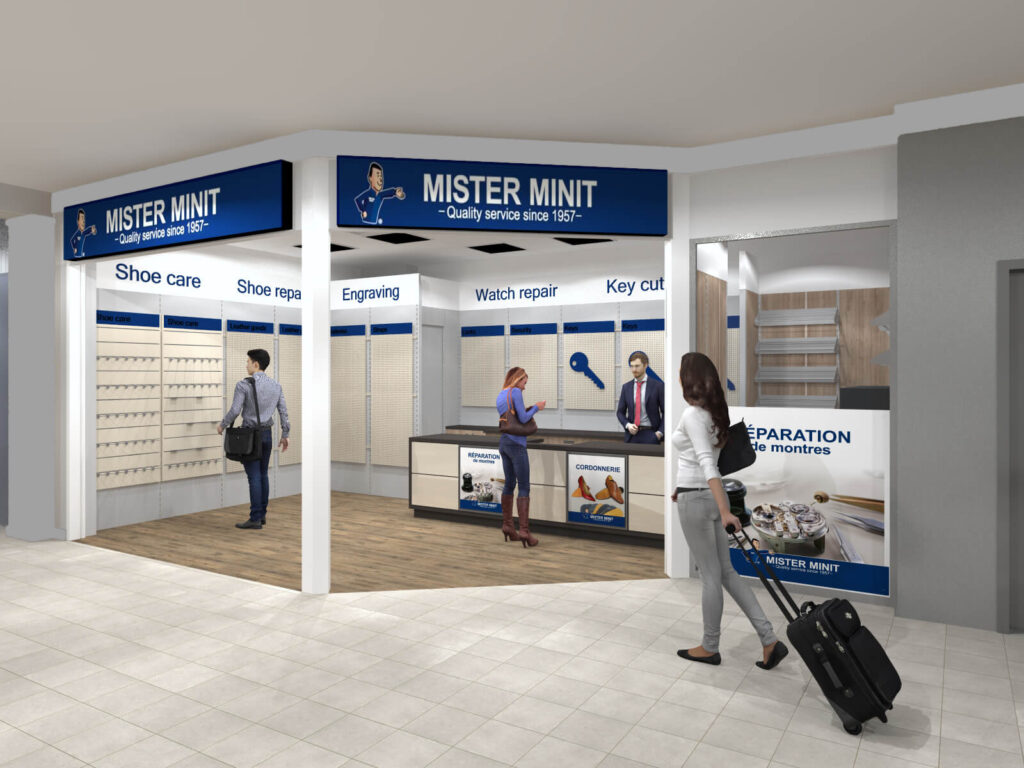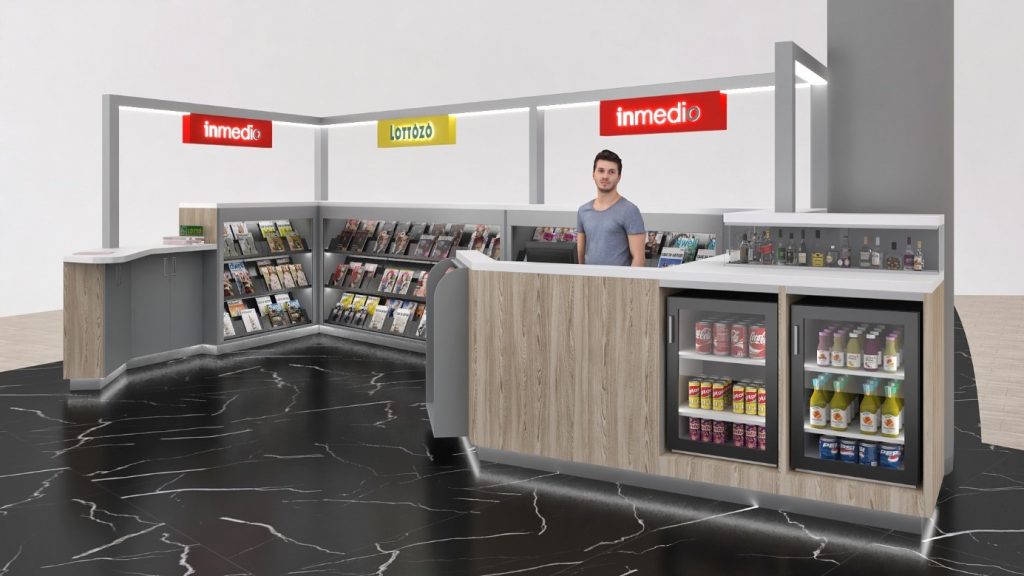We all know that you should not judge a book by its cover. But the reality is that by nature, that's exactly what you do: you judge a book by its appearance. Think about it. As soon as we enter a shop, we decide within seconds whether we want to know the details or quickly move on.
We analyse the place at lightning speed. Is it clean and welcoming? Can I afford to shop here? Can I find what I want quickly? Will the staff be nice to me? Are the products to my taste? Can I try them out? And most importantly: is there something special about this place?
Although retail stores are very different from each other, store owners have very similar goals: to attract customers, make them buy, turn them into committed regular customers and increase sales.

If you are planning to open a new store or want to renovate and modernise your existing one, you have a lot to think about and a lot of decisions to make, as shopping habits have changed significantly in recent years. With increasing competition and the rise of e-commerce, it's no longer enough to have a tastefully decorated shop and offer high-quality products. It is not enough to "just" give value to customers. You have to go further, you have to offer more.
But what is the added value that is powerful and compelling enough to make customers want to come into your store? And when they finally do, do they shop there and become repeat customers?
This added value is not a tangible thing, but a myriad of factors that will make your business unique and unforgettable, contributing to brand awareness and customer satisfaction.
The "secret" lies in knowing and understanding your business and your customers. Traditional product-centric selling must be replaced by customer-centric selling.
Here are the four most important principles to keep in mind when designing a sophisticated and customer-friendly shop interior
Make sure your brand message sends clear signals to your customers from the moment they engage with your business.
Clear, consistent store design, store layout and product placement adapted to your brand and product range, to attract the right customers to your store by sending consistent messages subconsciously.
Before planning your shop fittings, you should think carefully about the following questions:
This is the image - the vision - that every business owner must define. Positioning your business is about brand and image. A very good example of this is Starbucks, which has built its entire empire by focusing not on the speciality of its coffee, but on offering its customers a coffee-drinking and a good time.
With comfortable armchairs, a welcoming environment and free wifi, it encouraged shoppers to spend more time in the shops, even buying more than once in a visit, feel comfortable and return often.
The overall design of the shop clearly reflects the fact that their customers are not looking for cheap coffee, but rather for relaxation and a comfortable way to spend their time. And they're willing to pay more for it than in the average café.
So the design of your store and the positioning of your products is only really effective if the customer can understand the brand and, if possible, feel it.
The essential difference between online (e-commerce) and offline (in-store) shopping is the shopping experience and the experience of shopping. Only in physical shops is it possible for customers to experience, to ask for advice, to touch, to try on and try out the products they want to buy, and thus to reduce the risk of their purchases.
In order to maintain and increase their competitiveness, retailers and business owners will have to place much more emphasis on influencing the senses, delighting customers and helping them to have a positive experience.
The layout and design of the shop affects all the senses of the visitor. It's important to focus on more than just the look of the shop when designing! The more sensory impressions we can create, the more pleasant the customer's experience in the store will be, which will have an impact on brand, product perception and sales.
A pleasant smell, soft music, the colour and material of furniture and equipment, the coverings, lights, signs and advertising boards, photos and displays, the packaging of products, the appearance and behaviour of employees, all have an impact on the emotions, mood and behaviour of customers and contribute subconsciously to the perception of products and brands.

The huge advantage of physical shops over online shops is the direct human contact and experience. That's why it's essential to have staff in your business who understand the importance of this and know how to take advantage of it.
Apple has implemented this practice very well and is doing it successfully. People come in and shop at Apple stores - despite the cheaper options offered by online retailers - because the staff there can provide effective advice. In Apple stores, staff are not focused on selling products, but on building relationships and providing effective assistance.
A similar example is Nike, which was the first to introduce a free foot and running diagnostic before selling running shoes. Customers can try the shoes on a treadmill, during which the position, angle of inclination and grip of the foot are analysed by computer. They can then use this information to give customers expert advice on which shoes are best for them.
Train your staff and develop them into expert advisers, support workers and customer-focused individuals. Don't focus on sales volume, but on ensuring customer comfort and satisfaction.

The layout, style and layout of the shop, the window display, the interior and exterior advertising signs, the information signs, the coverings, the colour of the walls, the furniture and other fittings, the lights, the music, the scents, all need to be in harmony with each other and the brand to ensure customer comfort, a hassle-free experience and to actively engage customers in the shopping process.
Plan what the customer will see when they enter your store, what their impressions will be. Think about what you want your customers to feel.
When opening a new business or renovating an existing one, many business owners underestimate the importance of designing the right shop fittings, choosing furniture and equipment and coordinating the different elements. Many people ignore leave the factors that influence consumer behaviour.
Designing a shop interior that is eye-catching and coordinated in every detail is a complex and intricate task, and one that requires the help of a specialist designer.
Creating a harmonious and inspiring shop interior can be achieved by carefully planning the following tasks and coordinating the different areas. The steps of the planning process and the role of each step are explained in our next article, Steps in the design of a shop interior that encourages purchases will be described in more detail:
Designing a shopper-friendly store and creating an unforgettable customer experience requires complex and detailed planning.
Keeping the above principles and considerations in mind will help to raise awareness of the design sub-tasks, coordinate plans and create a coherent, harmonious, consumer-friendly environment. Remember: stunning design is all about surprise and delight.
Can you tell us what problems you are currently facing or would you like to ask us any questions about setting up your business?
Wherever you are in the process of setting up your business, we look forward to reading your questions and answering them. Contact us at the following e-mail address: info@amashop.hu
This website uses cookies to enhance your experience. Some are essential for site functionality, while others help us analyze and improve your usage experience. Please review your options and make your choice.
If you are under 16 years old, please ensure that you have received consent from your parent or guardian for any non-essential cookies.
Your privacy is important to us. You can adjust your cookie settings at any time. For more information about how we use data, please read our privacy policy. You may change your preferences at any time by clicking on the settings button below.
Note that if you choose to disable some types of cookies, it may impact your experience of the site and the services we are able to offer.
Some required resources have been blocked, which can affect third-party services and may cause the site to not function properly.